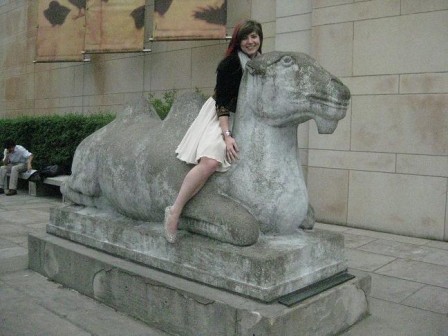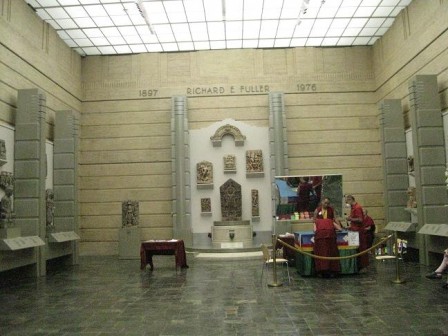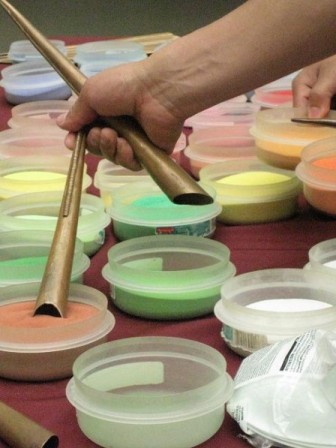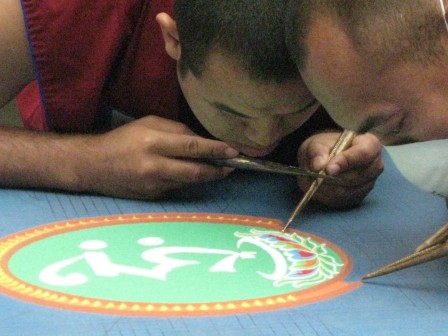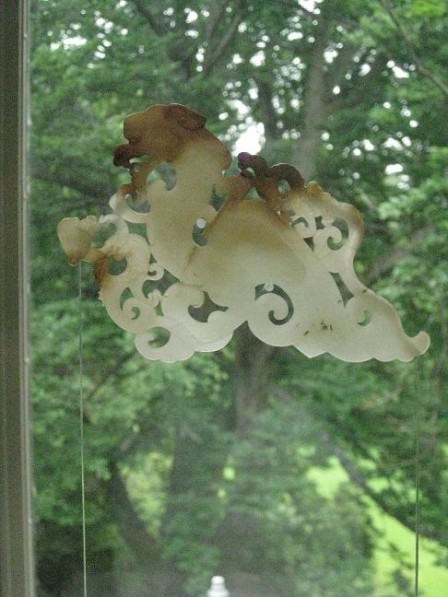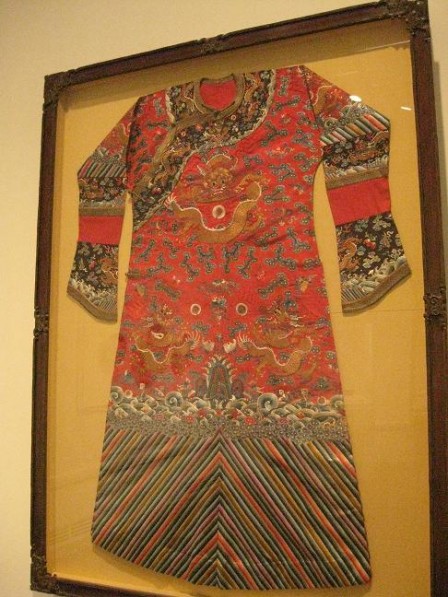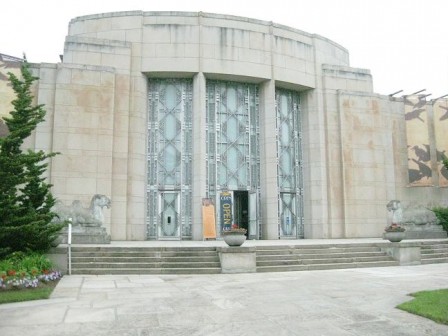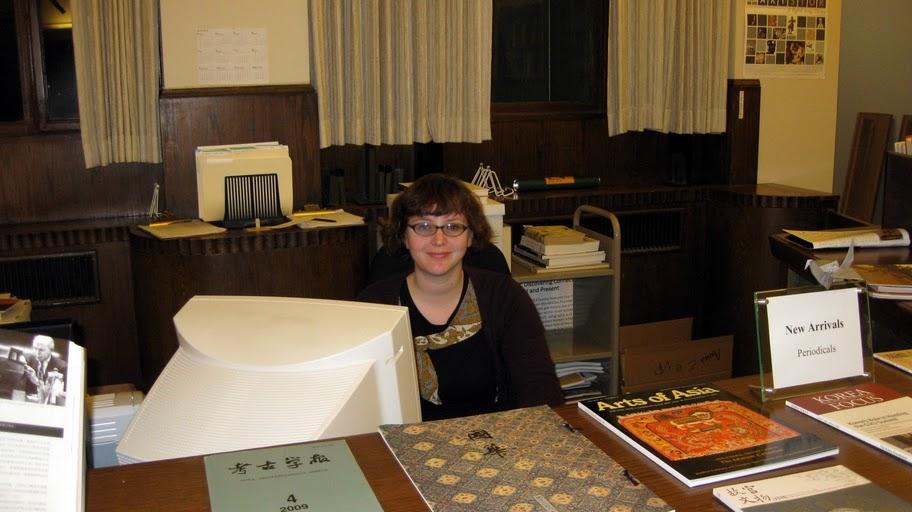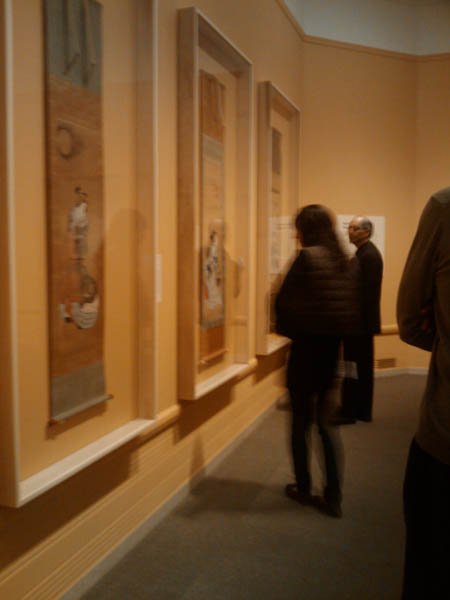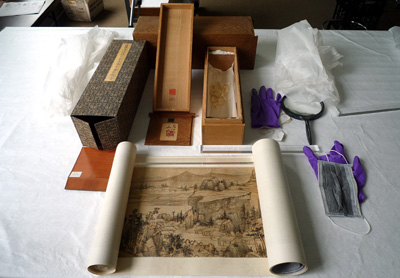A SAM Intern’s First Visit to the Seattle Asian Art Museum
Within the Fuller room, visiting monks from the Gaden Shartse monastery were creating a mandala and will do so over the next few days. Mandalas are a Buddhist form of sacred art that carry spiritual significance. They are made by layering colored sands in an intricate design which usually relates to the dwelling of a diety. The monks vigorously run one chakpur (a bronze funnel that holds colored sand) over the ridges of another chakpur in order to direct the sand into the design.
Once the design is complete, the monks will sweep the sand into a container which will be placed in moving water such as a river or ocean. So four days of concentrated, intricate work gone in about thirty minutes. Quite a reminder of beauty and its impermanence.
Continuing through the museum, I repeatedly viewed objects made of nephrite. Upon later research, I learned that nephrite is one of two kinds of jade and usually comes in shades of green, grey, and brown with varying degrees of translucence. My favorite object was a dragon and tiger plaque, made of nephrite in the Ming period (1368-1644). It’s a decorative object, and it made me think about how there was a time that anything functional was expected to be beautiful, that functionality and beauty are not mutually exclusive.
The displays of ceramics, sculptures, and scrolls were lovely and accessible. The labels gave clarity to the objects they described but still left me with room to interpret and understand the works on my own. I most appreciated this when admiring a woman’s robe from China, ca. 1875-1908. The label mentioned that garments in this era were seen as descriptors of one’s true nature as well as indicative of socioeconomic status. I found this idea inspiring and refreshing as much of what I’ve studied with fashion discusses garments as an act of display of wealth or a purposeful effort to control how others’ interpret us, not necessarily as an indication of our nature.
I definitely enjoyed my time at the Seattle Asian Art Museum. It’s a manageable museum with space that facilitates easy movement from exhibition to exhibition and that contains a diverse range of work characterized by unique perspectives. I enjoyed something in each exhibition: plaques, robes, kimonos, prints, ceramics, and contemporary prints juxtaposed with sculptures and paintings. I plan on going back there and taking some people I know that will likely enjoy it as well.
